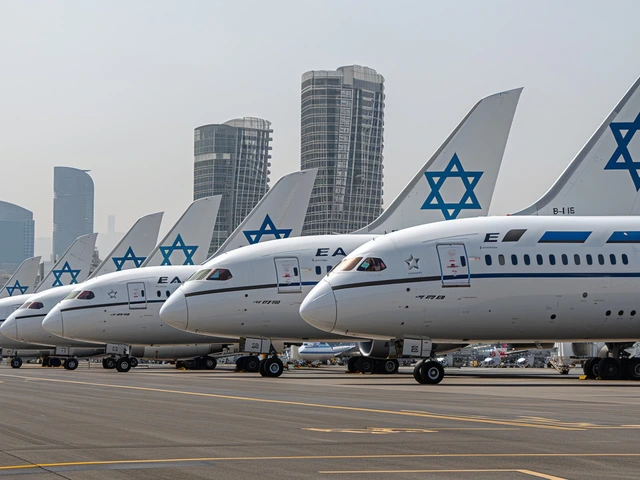Nepal Plane Crash: A Tragic Incident and a Miraculous Survival
On July 25, 2024, Nepal experienced one of its most devastating aviation disasters as a Saurya Airlines plane encountered a catastrophic failure, leading to a horrific crash that claimed the lives of 18 passengers. The incident has sent shockwaves through the nation and has put the spotlight back on the pressing need for stringent aviation safety measures.
The ill-fated flight, which was on its routine journey, faced unexpected troubles mid-air. The extent of the disaster was such that the cockpit, which is often considered one of the most secure parts of a plane, split completely. Amidst this chaos and destruction, the captain of the flight, Manish Raj Shakya, miraculously survived, an occurrence that many are attributing to sheer luck and fate. Despite the cockpit splitting, Captain Shakya managed to escape with his life. His survival story is not just a beacon of hope amid the sorrow but also a testament to human resilience and survival instincts under dire conditions.
The Catastrophic Failure: What Went Wrong?
The exact cause of the crash remains under thorough investigation. Preliminary reports suggest a sudden and catastrophic technical failure. Aviation experts and investigative bodies are currently meticulously examining the wreckage, flight data records, and interviewing surviving witnesses to piece together the sequence of events that led to this tragedy. Initial speculations range from a possible failure in the aircraft’s essential systems to unforeseen external factors that might have played a role. However, it is too early to definitively state what went wrong, and investigations are imperative to prevent such disasters in the future.
This incident underscores the critical need for enhancements in aviation safety protocols in Nepal. The nation has long struggled with aviation safety, and this tragic event has reignited discussions surrounding the implementation of more robust safety measures, regular inspections, and the upgrading of older aircraft.
Flight Captain Shakya: A Tale of Survival
Captain Manish Raj Shakya’s survival is, without a doubt, unbelievable. Experts and laypersons alike are referring to it as nothing short of a miracle. The captain, who has over a decade of flying experience, was at the helm when disaster struck. Despite undergoing such a traumatic experience where the cockpit split, Captain Shakya’s alertness and quick response played a crucial role in his survival. The aviation community, along with the general public, is currently following his recovery process closely, hopeful for his swift recuperation both physically and mentally.
The Broader Picture: Aviation Safety in Nepal
The tragedy has once again cast a light on Nepal’s aviation industry, which has a troubling history of accidents and incidents. International aviation bodies have repeatedly flagged Nepal for its subpar safety standards, and this recent crash only reinforces those concerns. There is an urgent call for action to address these persistent safety issues. Recommendations from experts include comprehensive audits of current aircraft, investment in newer, more reliable technology, and the continuous training and re-training of aviation staff to handle emergencies effectively.
Improving communication systems is also a critical factor. Effective communication between the aircraft and air traffic control can often mean the difference between life and death in emergency situations. Ensuring that all safety protocols are followed and that strict regulatory measures are in place can help mitigate the risks associated with aviation travel in Nepal.
In examining the global context, many countries have successfully overhauled their aviation safety standards and have seen a significant reduction in incidents. Learning from these successful models and implementing best practices could be the way forward for Nepal.
The Investigation Continues
The investigative bodies are leaving no stone unturned in uncovering the root cause of the catastrophic failure. This includes detailed analysis of the flight’s maintenance records, pilot reports, and any potential external factors that might have contributed to the crash. The aim is not only to determine what went wrong but also to develop strategies and recommendations to prevent similar tragedies in the future.
The 18 lives lost in this incident are a somber reminder of the fragility of human life and the devastating impact that such accidents can have on the victims' families, friends, and the broader community. As the investigation progresses, there is a collective hope that the findings will lead to tangible improvements in aviation safety, ensuring that such a tragedy does not repeat itself.
A Call for Change
This heartbreaking incident is a crucial turning point for Nepal’s aviation sector. It should serve as a wake-up call to both the regulators and the airline operators to take immediate and decisive action. Ensuring the highest standards of safety is not just a regulatory mandate but a moral obligation to protect every individual who steps onto a plane.
In concluding, while the miraculous survival of Captain Shakya provides a brief respite and a glimmer of hope, the broader implications of the crash must be addressed urgently. The call for stringent safety measures cannot be ignored. Every life lost is a stark reminder of the importance of safety in aviation. As the investigation continues and more details emerge, the world watches, hoping for significant reforms that prioritize the safety and lives of every passenger and crew member in Nepal’s skies.
Latest Posts
-

Bayer Leverkusen vs. Stuttgart: In-Depth Analysis of Confirmed Lineups and Key Players
-

Real Madrid's Predicted Lineup for Crucial Chelsea Clash: Key Players, New Signings, and Tactical Insights
-

El Al Flight Makes Emergency Refueling Stop in Turkey Amid Saudi Airspace Ban
-

TikTok Viral 'Infinite Money Hack' Unveiled as Check Fraud: The Dark Side of Viral Trends
-

UFC 304: Comprehensive Preview of Edwards vs. Muhammad 2 and Full Fight Card Analysis
